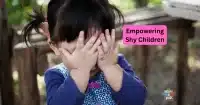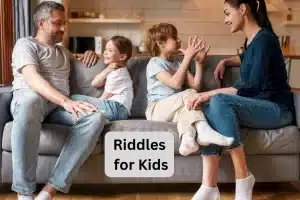If you are the parent of a child or teenager, it is imperative that you take a few moments to read this guide on youth suicide prevention. As you just read that first sentence, you were likely thinking, “My kid won’t kill themselves. It’s not usually kids that kill themselves….” You may be surprised to learn that suicide is actually the 3rd leading cause of death among youth ages 10-19 years old. That statistic, alone, indicates that suicide among kids and teens is a bit more prevalent than most of us would like to believe; however, despite its prevalence, it is preventable. Kids and teens that contemplate taking their own lives often give warning signs of the distress that they are experiencing.
As a parent, one of the biggest challenges you face is coming to terms with the fact that you do not always know or understand what your child is thinking and/or feeling. You may not believe that your child has the desire or the capability of taking their own life; however, thoughts regarding suicide are exceptionally common among kids and teens. This is why it is essential that you learn as much as possible in regard to youth suicide prevention. By knowing the signs of distress, you may avoid having to experience one of the most difficult, heartbreaking losses of all – the death of your child as a result of suicide. There are also experts who specialize in everything from teen depression treatment to teen drug addiction recovery. They offer different kinds of treatments including troubled youth treatments. You can rely on them for help and assistance.
Know the FACTS
If you are concerned that your child may be considering suicide, you should learn some basic FACTS. The following outlines these FACTS:
F – “F” stands for “Feelings”.
A – “A” stands for “Actions”.
C – “C” stands for “Changes”
T – “T” stands for “Threats”.
S – “S” stands for “Situations”
How has your child been feeling? What types of actions are they taking? Have you observed any changes in your child? Has your child made any threats that sound as if they are contemplating suicide? Have there been any situations that your child has been involved with that could indicate severe depression or suicidal tendencies?
Risk Factors
FACTS is just a simple, quick way to recognize a problem with your child. There are many other signs and cues that your child or teen may be considering taking their own life. Before delving into those, it is first important to identify the risk factors associated with youth suicide. Believe it or not, knowing the risk factors may aid in youth suicide prevention. While all people – regardless of age – have their own reasons for wanting to kill themselves, the following have been identified as the most common risk factors, according to professionals in the medical field:
- Kids and teens that have a desire to take their own life are commonly diagnosed with some type of psychological illness. Examples of these mental illnesses include depression, disorders associated with their behavior, and abusing substances.
- Stress and/or dysfunction in the family may also result in an increased potential for suicide among youth.
- There are several environmental-based risks that could lead to thoughts of harming oneself among youth. A prime example is a firearm or prescription medications in the home.
- Certain situations could put a youth at risk for suicide. Examples include the death of a person that they love, abuse, and/or violence within the home.
The Warning Signs
Now that you understand how prevalent suicide is among youth, know how to consider the FACTS, and know a few of the most common risk factors, it is now time to learn about the warning signs that are commonly exhibited by kids and teenagers that are considering suicide:
- The youth may start talking and/or obsessing over suicide, death, and life after death.
- It is common for suicidal youth to become dependent on alcohol or drugs.
- Many start to display a sense that they lack purpose and that their life is meaningless.
- It is common for a youth to find that it is difficult to focus or to think in a clear fashion.
- Activities and hobbies that the youth was enjoyed are no longer interesting.
- Many will start engaging in behaviors that are considered to be risky or reckless.
- Many will start to behave in a manner that is violent, rash, and even bizarre.
- Sleeping and eating habits may start to change.
- The troubled youth may start to experience deep and/or strong feelings. Examples include intense grief, uncontrollable anger, a high level of anxiety, a strong sense of hopelessness, or an unusual amount of guilt.
Getting Help
Now that you understand the risks and warning signs of suicide, you have solid knowledge on when to identify when a youth is in trouble and possibly thinking of taking their own life. You should never ignore the risks or the signs. You should talk openly with your child and display your love and support. It is advisable that you encourage the child to talk to a person that they are comfortable with, such as their doctor or a school counselor. In addition to this, you may use the following numbers to aid in youth suicide prevention:
- National Suicide Prevention Lifeline: 1-800-273-TALK (8255) free 24/7
- Trevor Helpline: 1-800-850-8078
- Nineline: 1-800-999-9999
- National Hopeline Network: 1-800-784-2433
- You may visit the following website to find a crisis center in your area:
http://www.suicidology.org/Resources/Crisis-Centers
Biography:
Angie Shiflett is a writert that focuses on writing on an assortment of topics. Currently, her passion is education. Both Angie and her husband place a high emphasis on family, and dedication to the importance of a proper education.
This article is the copyright of More4kids Inc. No part may be copied or reproduced in any form without the express permission of More4Kids Inc © and All Rights Reserved















Add Comment